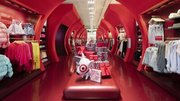News
Report: Supply chains trending toward growth
March 8, 2012
Retailers and supply chain management (SCM) executives are shifting from cost cutting to growth mode, according to the third annual State of the Retail Supply Chain Report released this week by The Retail Industry Leaders Association (RILA), in partnership with Auburn University and with sponsorship from Accenture.
The report, which interviewed 199 retail supply chain executives, also places emphasis on multi-channel retailing and explores how retailers are working to meet the increased consumer demand for continual access to products from any channel.
"This study will be essential reading for a wide cross-section of retail supply chain executives seeking insights into the key supply chain trends taking place in retail, including multi-channel operations," said Parag Jategaonkar, senior executive with Accenture's Retail practice. "Accenture's own experience with clients indicates an increasing focus amongst retailers on developing their supply chains to more effectively deliver a compelling customer experience, regardless of the channel."
The most significant takeaway from the report, according to Casey Chroust, executive vice president of retail operations, centered on the importance of multi-channel operations, including fulfillment of .com, mobile and tablet orders. The report states that electronic e-commerce sales have grown by more than 15 percent, to $35.3 billion, versus an overall sales growth of 4.1 percent the previous year. With predictions that e-commerce sales will grow 10 percent annually, multi-channel has become a game changer for retailers. It has also added a new layer of fulfillment complexity that retail SCM executives must manage.
According to the report, more than 85 percent of survey participants indicated that direct consumer fulfillment is a top priority for them, and that it is imperative to create a seamless customer experience regardless of the fulfillment channel, order size, origin or delivery requirement.
"Consumer expectations are changing, and as a result, retail business models are changing," Chroust said. "Traditionally, retailers have used separate operational models to move goods and fulfill orders. Now those models need to be merged so that companies can continue to deliver the products consumers want across any channel without losing efficiency or adding cost. This requires advanced integration and innovation and working closely with suppliers and service providers while utilizing technology."
Read more about multi-channel retailing.





